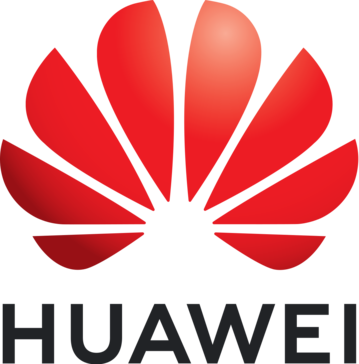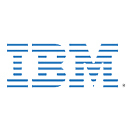Description

Kunpeng Devkit

Azul Platform Prime (Zing)
Comprehensive Overview: Kunpeng Devkit vs Azul Platform Prime (Zing)
Here's a comprehensive overview of Kunpeng Devkit and Azul Platform Prime (formerly known as Zing), focusing on their primary functions, target markets, market share, user base, and key differentiating factors:
Kunpeng Devkit
a) Primary Functions and Target Markets:
-
Primary Functions:
- Kunpeng Devkit is primarily a development toolkit designed to optimize software applications for the Kunpeng processor architecture, which is developed by Huawei. The toolkit includes compilers, profilers, and libraries that help developers enhance application performance on Kunpeng processors.
- It supports a variety of programming languages and provides tools for debugging, performance analysis, and application tuning.
- The toolkit helps in seamlessly porting applications to the Kunpeng platform by offering compatibility tools and extensive documentation.
-
Target Markets:
- The primary target market for Kunpeng Devkit includes enterprises and developers working with Huawei’s Kunpeng processors, often in sectors like telecommunications, cloud computing, and data centers.
- Organizations looking to optimize their software solutions on the ARM architecture, especially those invested in Huawei's ecosystem, would find this toolkit particularly beneficial.
b) Market Share and User Base:
-
Market Share:
- Kunpeng Devkit has a niche market given its specific alignment with Huawei’s Kunpeng processors. Its adoption is primarily in regions where Huawei has a strong market presence, such as China and some other Asian countries.
- It is not broadly used in markets dominated by x86 architectures, such as North America and Europe.
-
User Base:
- The user base mainly comprises businesses and developers who are committed to or are planning to adopt Huawei’s technological stack for their computing needs.
- There is a growing interest from enterprises that are looking to diversify their hardware dependencies and explore ARM-based solutions.
Azul Platform Prime (Zing)
a) Primary Functions and Target Markets:
-
Primary Functions:
- Azul Platform Prime, formerly known as Zing, is a commercial Java runtime designed to enhance Java application performance and scalability.
- It is specifically tailored for low-latency and high-throughput workloads, offering features like pauseless garbage collection and optimized JIT compilation.
- The platform enables higher performance for Java applications across cloud, on-premise, and hybrid environments.
-
Target Markets:
- Azul Platform Prime targets enterprises with performance-critical applications in industries such as finance, e-commerce, telecommunications, and streaming services.
- It is beneficial for organizations looking to improve the responsiveness and reliability of their Java applications.
b) Market Share and User Base:
-
Market Share:
- Azul has a strong market presence in the Java ecosystem, with Azul Platform Prime being a preferred choice for mission-critical Java applications requiring enhanced performance.
- While it commands a smaller share compared to dominant Java platforms, it stands out in niche markets demanding high performance and low latency.
-
User Base:
- The user base consists of enterprises that rely heavily on Java for their software infrastructure and need specialized capabilities to meet their performance requirements.
- It is particularly popular among financial institutions, large e-commerce platforms, and sectors where Java is extensively used and performance is crucial.
Key Differentiating Factors
-
Architecture Support:
- Kunpeng Devkit is closely tied to ARM architecture and Huawei's Kunpeng processors, making it specialized for that environment.
- Azul Platform Prime is designed for Java applications regardless of underlying hardware, with a broad focus beyond specific chip architectures.
-
Performance Optimization:
- Kunpeng Devkit focuses on optimizing applications for specific hardware (Kunpeng CPUs), providing ARM-centric tools and support.
- Azul Platform Prime is known for its advanced Java performance optimizations, such as pauseless garbage collection and just-in-time compilation enhancements, applicable in a variety of computing environments.
-
Market Focus:
- Kunpeng Devkit is more regionally and technologally specific (Asia, Huawei ecosystem).
- Azul Platform Prime has a global reach, especially in markets where Java predominates and performance optimizations are highly valued.
Both products cater to performance optimization but differ significantly in their architectural focus, application domains, and geographic or market penetration.
Contact Info

Year founded :
Not Available
Not Available
Not Available
Not Available
Not Available

Year founded :
Not Available
Not Available
Not Available
Not Available
Not Available
Feature Similarity Breakdown: Kunpeng Devkit, Azul Platform Prime (Zing)
To provide a detailed feature similarity breakdown for Kunpeng Devkit and Azul Platform Prime (Zing), we can analyze these tools based on their core features, user interfaces, and unique characteristics. These tools are typically used in the context of enhancing software performance, especially in systems leveraging modern processors and Java applications.
a) Core Features in Common
Both Kunpeng Devkit and Azul Platform Prime (Zing) offer features that cater to performance optimization and efficiency in software development and execution:
-
Performance Optimization:
- Both tools aim to maximize performance on modern hardware architectures. They are designed to optimize applications to leverage the underlying hardware efficiently.
-
Scalability Enhancements:
- They improve application scalability, ensuring that applications perform well under increased loads.
-
Compiler Optimization:
- Uses advanced compiler techniques to improve code performance. This might include optimizing code paths and efficient use of processor features.
-
Resource Management:
- Efficient management of system resources like CPU and memory to enhance application responsiveness and throughput.
-
Integration Support:
- Both offer support for integration with existing development environments and toolchains, enabling developers to seamlessly incorporate these tools into their workflow.
b) User Interfaces Comparison
-
Kunpeng Devkit:
- Typically offers a more hardware-centric interface, focusing on profiling and tuning applications for specific architectures such as the Kunpeng processor line.
- Aimed at developers familiar with lower-level hardware optimization, offering both command-line and GUI options for task execution.
-
Azul Platform Prime (Zing):
- More focused on Java applications, offering a variety of tools tailored for Java performance enhancements.
- Includes a GUI with user-friendly dashboards and graphs for monitoring application performance, garbage collection, and resource usage.
c) Unique Features
-
Kunpeng Devkit:
- Architecture-Specific Optimization: Tailored specifically for optimizing applications on Kunpeng processors, offering deep insights into the performance characteristics of these architectures.
- Profiling and Analysis Tools: Advanced profiling tools specifically designed for enhancing the performance of applications on ARM-based architectures.
-
Azul Platform Prime (Zing):
- Zing JVM: A unique feature is its Zing JVM, which is designed to provide low latency and high performance for Java applications. It handles garbage collection and memory management very efficiently.
- Continuous Profiling and Elastic Memory: Offers continuous profiling to analyze performance in real-time and elastic memory to optimize memory usage dynamically.
Conclusion
While both Kunpeng Devkit and Azul Platform Prime (Zing) focus on performance optimization, they cater to different target audiences and use cases. Kunpeng Devkit excels in optimizing for specific hardware architecture, making it ideal for applications running on Kunpeng processors. In contrast, Azul Platform Prime focuses on enhancing Java performance with its advanced virtual machine capabilities, making it especially attractive for Java-intensive applications. The choice between them would depend on the specific needs of the application environment and the underlying hardware.
Features

Not Available

Not Available
Best Fit Use Cases: Kunpeng Devkit, Azul Platform Prime (Zing)
Kunpeng Devkit and Azul Platform Prime (formerly known as Zing) serve different purposes in the software development and application performance enhancement space. Here’s a breakdown of their best-fit use cases and how they cater to varying industry needs:
Kunpeng Devkit
a) Best Fit for Businesses or Projects:
-
Targeted Hardware Optimization: Kunpeng Devkit is designed specifically for optimizing applications running on the Huawei Kunpeng processor architecture. Therefore, businesses that have adopted or plan to adopt Huawei infrastructure will find it particularly beneficial.
-
High-Performance Computing (HPC): Industries or sectors that rely heavily on HPC, such as scientific research and financial modeling, can leverage Kunpeng Devkit to maximize processing efficiency on ARM-based architectures.
-
Cloud and Data Center Operations: Companies operating large-scale data centers may use Kunpeng Devkit to optimize workloads, improve energy efficiency, and achieve better resource utilization on ARM architectures.
-
Telecommunications and Networking: Businesses in telecom that require processing capabilities for tasks such as network management, data routing, or signal processing can optimize these processes on Kunpeng processors using the devkit.
Industry Vertical and Company Size:
- Industry Verticals: Telecom, Cloud Services, and High-Performance Computing.
- Company Size: Typically medium to large enterprises with substantial IT infrastructure needs and investments in Huawei technologies.
Azul Platform Prime (Zing)
b) Preferred Use Scenarios:
-
Java Application Performance Optimization: Azul Platform Prime is tailored for companies running Java applications that demand high performance, low latency, and high throughput, such as trading platforms and real-time analytics applications.
-
Garbage Collection Optimization: Businesses requiring consistent and smooth operations and those experiencing latency issues due to garbage collection pauses in Java can benefit significantly from Azul's pauseless Garbage Collector (C4).
-
Microservices and Cloud-Native Environments: Organizations utilizing microservices architectures, particularly in fast-paced continuous deployment environments, can leverage Azul to enhance Java runtime performance.
-
Financial Services and Online Retail: Businesses in sectors that cannot compromise on response time, such as online retail and financial trading, will find Azul Platform Prime's features highly advantageous.
Industry Vertical and Company Size:
- Industry Verticals: Finance, E-commerce, and Telecommunications.
- Company Size: From medium-sized businesses to large-scale enterprises, particularly those with complex, high-volume transaction environments.
Comparative Summary
-
Kunpeng Devkit: Best for businesses using or transitioning to Huawei’s ARM-based processor architecture, with a focus on optimizing workload performance in cloud and HPC settings.
-
Azul Platform Prime (Zing): Ideal for companies running critical Java applications needing minimized latency and improved performance, especially in real-time and cloud-native environments.
Both products are tailored to streamline and enhance performance, but they cater to different technological needs and business strategies, effectively supporting a wide range of industry verticals and organization sizes.
Pricing

Pricing Not Available

Pricing Not Available
Metrics History
Metrics History
Comparing undefined across companies
Conclusion & Final Verdict: Kunpeng Devkit vs Azul Platform Prime (Zing)
Conclusion and Final Verdict
a) Considering all factors, which product offers the best overall value?
When determining which product offers the best overall value between Kunpeng Devkit and Azul Platform Prime (Zing), it's crucial to consider the specific needs and constraints of the user or organization. Azul Platform Prime (Zing) is particularly valuable for organizations looking to enhance Java application performance with reduced latency and improved scalability. Its ability to handle large heap sizes and reduce garbage collection pause times is remarkable, offering excellent value for enterprises running critical, high-performance Java applications.
On the other hand, Kunpeng Devkit is primarily designed to optimize applications for Huawei's Kunpeng processors. It offers value to enterprises or developers focused on maximizing performance and efficiency on ARM architectures, especially within ecosystems utilizing Huawei hardware.
Overall, if the primary goal is to optimize Java application performance across any infrastructure, Azul Platform Prime (Zing) generally provides better overall value. However, for ARM-focused optimization, specifically on Kunpeng processors, Kunpeng Devkit is the more specialized choice.
b) What are the pros and cons of choosing each of these products?
Azul Platform Prime (Zing)
-
Pros:
- Excellent performance for high-throughput Java applications.
- Significantly reduced garbage collection pause times.
- Ability to handle large heap sizes.
- Improves application start-up times and operational stability.
- Cross-platform and vendor-independent, suitable for diverse environments.
-
Cons:
- Licensing costs can be high, impacting budget considerations.
- May require technical expertise for optimal setup and tuning.
- Primarily focused on Java, limiting use for non-Java development.
Kunpeng Devkit
-
Pros:
- Optimizes software for ARM architecture, specifically Huawei's Kunpeng processors.
- Offers tools for performance tuning and cross-compilation.
- Ideal for developers working within Huawei's ecosystem.
- Integrates well with Kunpeng hardware for tailored performance enhancements.
-
Cons:
- Limited to ARM architecture, restricting broader applicability.
- Primarily beneficial for those using Kunpeng processors.
- May have a steep learning curve for developers unfamiliar with ARM optimization tools.
c) Specific recommendations for users trying to decide between Kunpeng Devkit vs Azul Platform Prime (Zing)?
-
Assess Your Infrastructure:
- If your organization relies heavily on ARM architecture or is within Huawei's ecosystem, particularly using Kunpeng processors, Kunpeng Devkit is more suitable.
- If you have a diverse infrastructure or are primarily focused on optimizing Java applications, Azul Platform Prime (Zing) is more appropriate.
-
Analyze Performance Needs:
- For Java applications needing low latency and high throughput, Zing provides significant benefits.
- For applications where performance optimizations on ARM are critical, consider Kunpeng Devkit.
-
Evaluate Budget Constraints:
- Consider the licensing and implementation costs of Azul Platform Prime (Zing).
- Determine if Kunpeng Devkit provides sufficient value without overt capital investment.
-
Consider Future Scalability:
- Azul Platform Prime (Zing) offers scalability across platforms, making it a good choice for future-proofing Java applications.
- For a future focused on ARM-based processing growth, align with Kunpeng Devkit.
Ultimately, aligning the choice with the organization's strategic goals, infrastructure setup, and specific application requirements is key to deciding between these two products.
Add to compare



